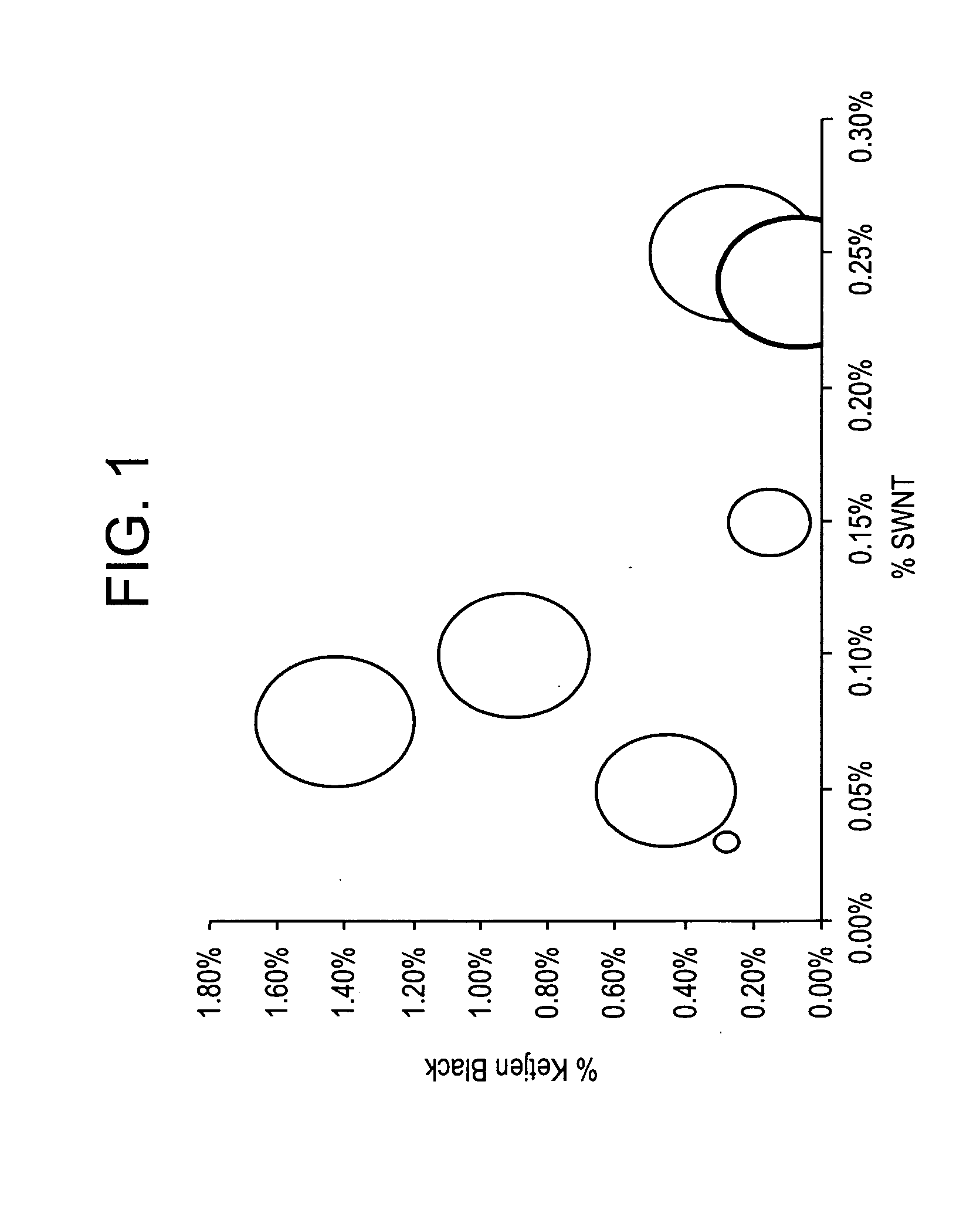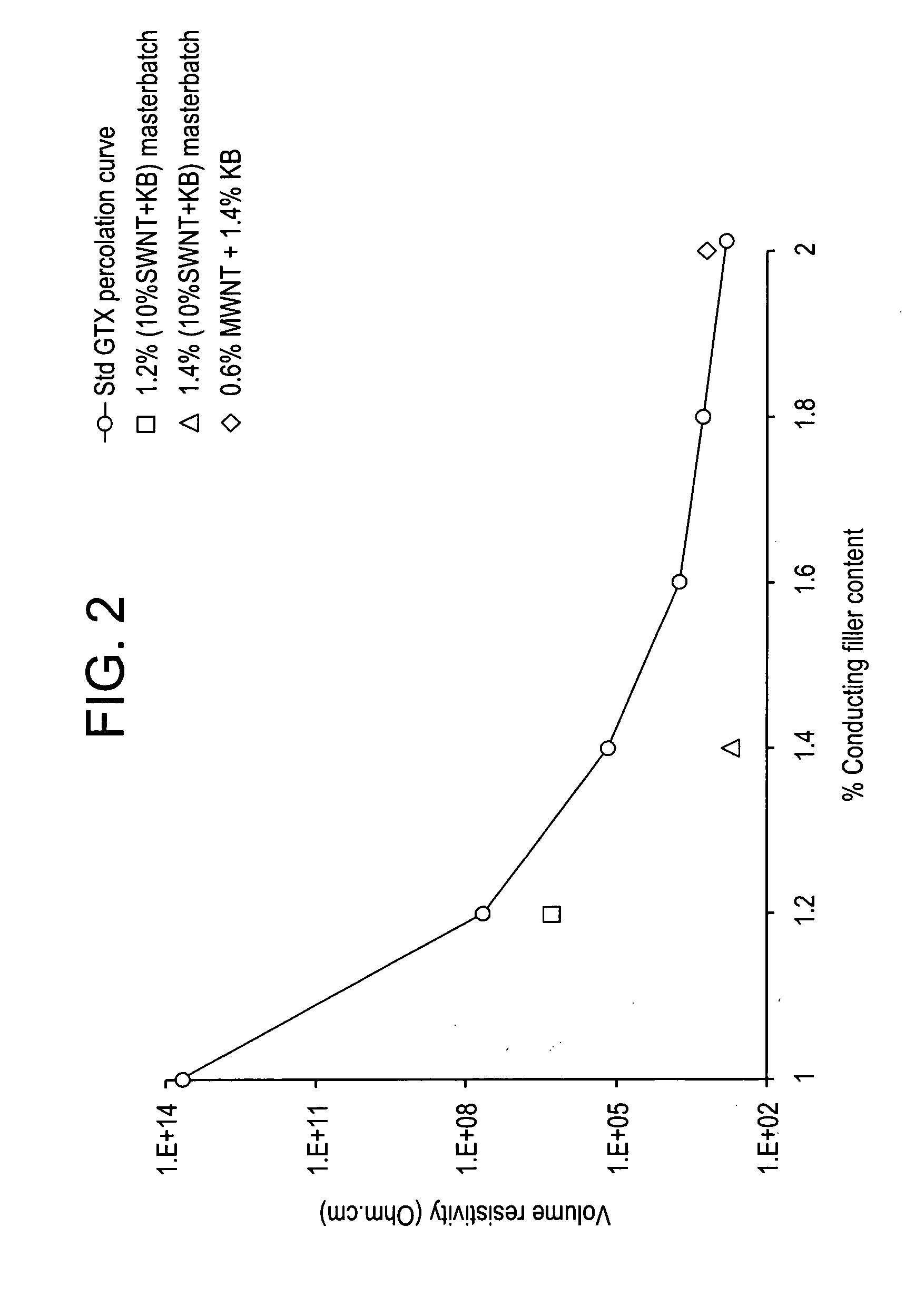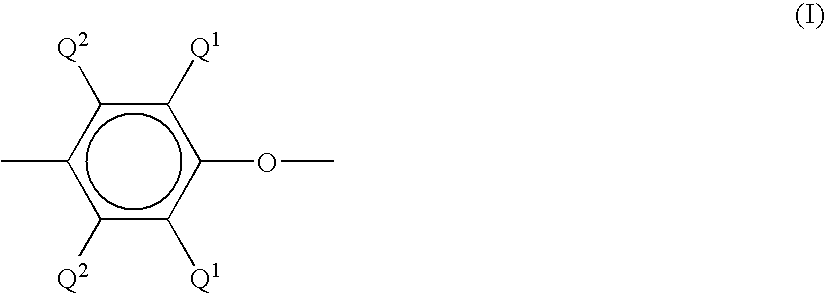Conductive thermoplastic compositions, methods of manufacture and articles derived from such compositions
a thermoplastic composition and thermoplastic technology, applied in the field of electrically conductive compositions and methods, can solve problems such as mechanical properties decreas
- Summary
- Abstract
- Description
- Claims
- Application Information
AI Technical Summary
Benefits of technology
Problems solved by technology
Method used
Image
Examples
example 1
In this example, SWNTs (about 10 mg) containing 10 wt % impurity were sonicated in isopropanol (100 ml) for 20 minutes using an ultrasonication horn at 80% amplitude (using a 600 Watts ultrasonicator with probe diameter of 13 mm available from Sonics & Materials Incorporated, USA). The appropriate amount of Ketjen black powder (carbon black commercially available from Akzo) was then added to the dispersion and the mixture was further sonicated for 2 min. at only 30% amplitude to form a conductive mixture. The carbon black had a particle size of about 30 to about 50 nm. The carbon black and the SWNT dispersion was then dried at room temperature. A measured amount of the conductive mixture was added to a 5 wt % polycarbonate solution (50 ml) in 1,2 dichloroethane and sonicated lightly at 30% amplitude for 2 minutes. The polycarbonate used was PC 175, commercially available from the General Electric Company.
The mixture containing the polycarbonate, the carbon black and the SWNTs was...
example 2
This example was undertaken to demonstrate the synergy between the SWNT and the nanosized conductive fillers, over other conductive combinations such as MWNTs and carbon black. In this example, a conducting filler composition containing 10 wt % SWNT and 90 wt % carbon black was melt blended with a polyphenylene ether-polyamide composition. The polyphenylene ether-polyamide composition is shown in Table 2.
A standard polyphenylene ether-polyamide conductive composition (Sample 23) was used as a control. The polyphenylene ether-polyamide composition was manufactured as detailed in Table 2. From the table it may be seen that the polyphenylene ether along with the citric acid, cupric iodide, potassium iodide, impact modifiers (Kraton G 1651 and G 1701×) were added to the extruder via the main feeder. The polyamides were added via side feeders attached to barrels 1-4, while the conductive combination was also added via side feeders attached to barrels 2-7. A comparative composition (Sa...
example 3
In this example the SWNTs were combined with MWNTs to produce a conductive composition. The organic polymer was polycarbonate. A discussion on the preparation of the various samples is listed below. The properties of the various compositions are shown in Table 5.
Samples 1-6
Extruder temperature was 285° C. The screw speed (rpm) was 150. Mixing time in the extruder was 3 minutes. The samples were prepared by dry blending a polycarbonate masterbatch containing 15 wt % MWNT, commercially available from Hyperion Catalysis with pure polycarbonate to achieve the concentrations of MWNT in the polycarbonate shown in Table 5. The blend mixture is added to the DACA mini-twin screw extruder (TSE) until a torque level of 5 Newton-meters (Nm) is obtained. This generally takes about 15 to about 30 seconds to completely load the DACA extruder. The mixture is then blended for 3 minutes and a strand is formed. Conductivity is not measurable below 2 wt % MWNT in the polycarbonate.
Samples 7-9
E...
PUM
| Property | Measurement | Unit |
|---|---|---|
| diameter | aaaaa | aaaaa |
| aspect ratio | aaaaa | aaaaa |
| impact strength | aaaaa | aaaaa |
Abstract
Description
Claims
Application Information
 Login to View More
Login to View More - R&D
- Intellectual Property
- Life Sciences
- Materials
- Tech Scout
- Unparalleled Data Quality
- Higher Quality Content
- 60% Fewer Hallucinations
Browse by: Latest US Patents, China's latest patents, Technical Efficacy Thesaurus, Application Domain, Technology Topic, Popular Technical Reports.
© 2025 PatSnap. All rights reserved.Legal|Privacy policy|Modern Slavery Act Transparency Statement|Sitemap|About US| Contact US: help@patsnap.com



